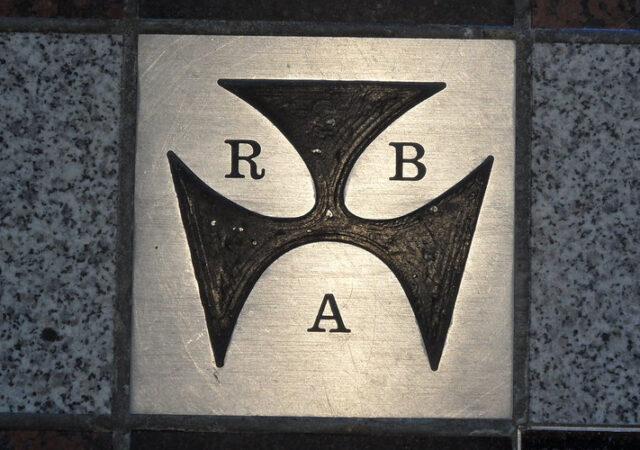Crypto mining is how new units of digital currency are created. It’s complex and its very process can impact investors.
As crypto continues to advance and more everyday Aussies are beginning to invest, the question arises; where do cryptocurrencies like Bitcoin actually come from?
While it can be easy to think it’s just uploaded from each cryptocurrency creator’s computer, the truth of the matter is that it’s much more complicated.
One of the most widely known and trusted processes, “proof-of-work” mining, has been key in ensuring network security as well as releasing new coins into the market for circulation.
For those new to crypto, here is a breakdown of crypto mining and how the process can impact investors.
Defining crypto mining
When cryptocurrencies like Bitcoin were first introduced there were basically only three ways investors could get their hands on it (mainstream exchanges like CoinSpot weren’t around at this time).
They could either:
- Trade it peer-to-peer
- Be gifted it from another holder
- Mine it themselves
The mining process generates rewards for processing transactions to miners who provide computing power to the network. The rewards from mining can sometimes include the newly ‘minted’ coins, as well as the transaction fees from the transactions accumulated in the block.
Mining itself requires technical know-how, as well as a huge amount of computational power needed to solve the algorithmic puzzles that make blockchain networks so secure. The process of mining entails validating data blocks and adding transactions to a public record – also known as a distributed ledger.
In order to validate and add new transactions to the blockchain, miners must compete with each other using specialised computing equipment to solve mathematical equations. These generate fixed-length codes known as “hashes”.
A hash is a complex mathematical function that converts any message or data input into a fixed-length code. In simple terms, it’s essentially a highly secure encryption technique where messages are transposed into a set of numbers and letters.
In order to discover the next block, and earn cryptocurrencies like Bitcoin, miners must be the first to generate a hash that has an equal or higher number of zeros in front of it than the “target hash”. This process is known as proof-of-work (PoW) and it’s how blockchains achieve consensus on transactions, without a central regulatory body.
The rise of mining pools
In the market’s early stages, cryptocurrencies were mined by individuals on desktop computers with regular central processing units (CPUs), however this has now been streamlined by using large “mining pools”. The pools are spread across many geographies – particularly in China before a number of regulatory measures were implemented.
If you’re wondering whether you should take up mining as a pocket-money hobby, consider that you’ll likely need millions of dollars worth of high end computers and a huge electricity budget to generate any tangible returns.
Alternatively, if you have some suitable equipment, you may consider joining a mining pool: a joint group of cryptocurrency miners who combine their computational resources over a network to strengthen the probability of finding a block.
Looking into the four types of mining
Currently there are four types of PoW mining:
- GPU mining
- CPU mining
- ASIC mining
- Cloud mining
GPU mining
GPU mining is the most common and popular type of mining crypto. It’s relatively cheap to do and is efficient. GPU mining requires graphic processing units (GPUs) rigs to utilise graphic cards to mine cryptocurrencies. One standard rig is made out of a processor, a motherboard, cooling, rig frame and around 2-8 graphic cards – the type you might find in a high-end gaming computer.
CPU mining
CPU mining involves using a central processing unit (CPU) to mine cryptocurrency. CPUs can be found in everyday hardware like laptops and desktop computers. In this day and age, CPUs are largely obsolete as they are quite slow and time consuming compared to the other competition rigs on the market.
ASIC mining
ASIC mining is when specific devices known as Application-Specific Integrated Circuits (ASICs) that are designed explicitly to perform a single task are used to mine crypto. Many miners opt for this method as ASICs tend to produce high amounts of cryptocurrency when compared to GPUs or CPUs.
Cloud mining
Finally, cloud mining is a process where you pay someone, often a big corporation, a specific amount of money to rent out their rig. They conduct the mining process on your behalf. The rent lasts for an agreed-upon time period, through which all of the earnings that the rig makes are transferred to your cryptocurrency wallet.
Breaking down crypto mining algorithms
Over the years there have been many challenges to the PoW consensus mechanism, one alternative to the PoW mechanism is Proof-of-Stake (PoS).
The PoS concept states that a person can mine or validate block transactions by simply owning a “stake” in the network.
For example; the Ethereum blockchain, which is currently in the process of transitioning from PoW to PoS, requires holders to stake 32 ETH to become a validator on the network. At current market value this is around AUD$185,000.
If a validator attempts to intentionally compromise the security of the network, they lose their stake. This ensures that the security of the network won’t be compromised as all participants have skin in the game, and something of value to lose if they go rogue.
For successfully validating transactions on a PoS network, users are rewarded the native asset (so in Ethereum’s case, the reward would be in ETH), similar to mining on a PoW network. The rewards can vary anywhere from 4-10 per cent APR depending on the amount of participants staking and the network activity.
PoS is often considered a more eco-friendly way to generate cryptocurrencies because it doesn’t require the use of energy-guzzling, heat-producing processors that contribute to environmental damage.
PoW vs PoS: Pros & cons
While both PoW and PoS provide security to the network and allow controlled inflation of the underlying asset, there are pros and cons to each consensus mechanism.
PoW is the closest a digital asset can come to being truly tangible.
The amount of electricity and computing power needed to create one single Bitcoin is enormous. This provides a significant layer of security if you consider that creating a fake Bitcoin would be harder than creating the real thing, which is already extremely difficult and expensive. On top of this is the fact that it would require a single entity to control 51 per cent of the entire network. Given the liquidity of Bitcoin, the number of holders and its market cap, this is practically impossible.
PoS on the other hand improves on PoW in a variety of ways. Firstly, the amount of electricity needed to run the blockchain is drastically reduced, and more people can participate in validating the network as they are not prohibited by electricity or equipment costs. The security is also improved as participants validating the network are incentivised to act in the best interests of their own investments.
Realistically, for most Aussies, the barrier to entry for both of these token-generating methods is far too high. There are likely better ways you can invest your hard-earned cash. Investing in cryptocurrencies and holding until the value increases is one way to drive returns without limiting your ability to liquidate your assets quickly.
To build a strong portfolio and hedge against risk, it’s smart to combine a few different approaches. Diversify the types of currencies or assets you invest in (ie. you may also incorporate assets like NFTs into your portfolio) and only invest what you can afford to lose.




























Trending